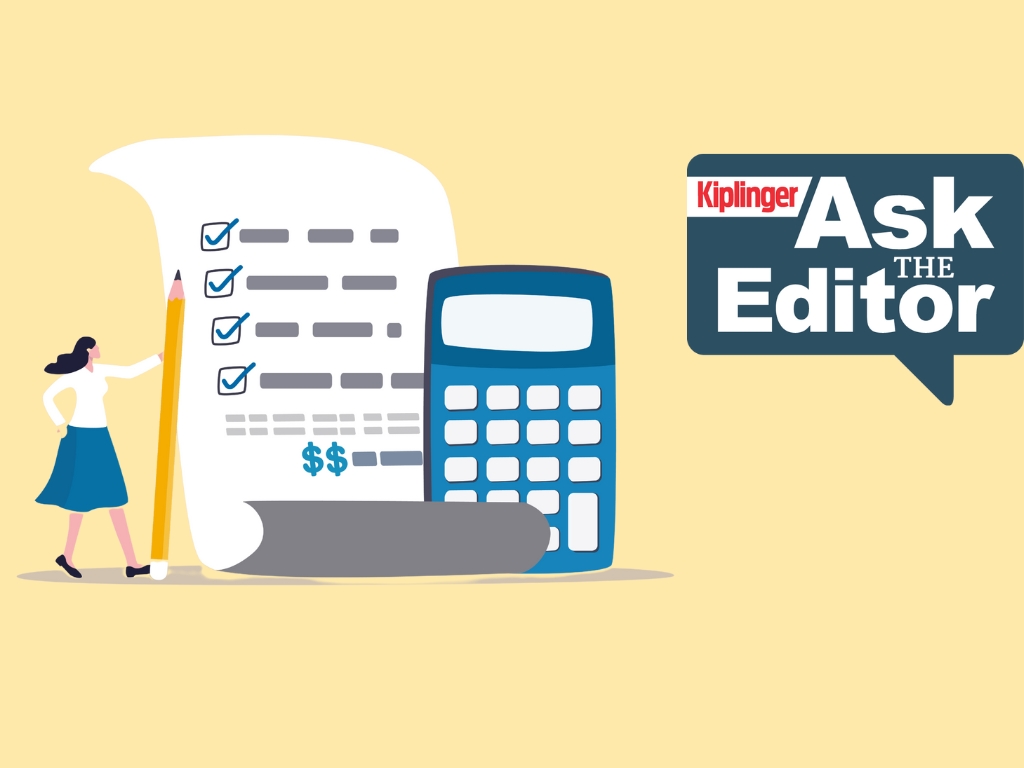Control What You Can When Volatility Shakes Market Confidence
Clearly the stock market is out of your personal control, but there are three specific things you can do to hang onto more of your retirement money regardless of what's rocking Wall Street.


If you often feel anxious about what’s happening with the stock market — especially in regard to your retirement savings — you’re not alone.
Emotional reactions to the daily ups and downs of both global and U.S. markets are so common that the financial education site Investopedia created the Investopedia Anxiety Index (IAI). This site charts investor sentiment based on reader interest in 12 financial terms, including words like “correction,” “bear market,” “bankruptcy” and “debt.”
It can be compelling — and oddly calming — to check the index and compare your concerns with millions of others around the world, helping you to understand that both good and bad times in the market — and the economy overall — is normal.
From just $107.88 $24.99 for Kiplinger Personal Finance
Become a smarter, better informed investor. Subscribe from just $107.88 $24.99, plus get up to 4 Special Issues

Sign up for Kiplinger’s Free Newsletters
Profit and prosper with the best of expert advice on investing, taxes, retirement, personal finance and more - straight to your e-mail.
Profit and prosper with the best of expert advice - straight to your e-mail.
Still, it can be frustrating when you have no say or sway in what happens to your money day to day. This is exactly why I recommend focusing on the things you have more control over, instead of the things you don’t. There are steps you could take as an individual investor to help prop up your portfolio and keep more of your money for retirement, no matter what the market is doing. They include:
Minimizing fees
Most investors try to dial down the risk in their portfolio when they’re near or in retirement. You may decide to maintain a portion of your investments in the market to keep up with inflation over the years, but that doesn’t mean you have to overpay an “expert” money manager to beat a certain benchmark. That’s unnecessary when there are some really low-cost index funds and exchange traded funds (ETFs) designed to do just what the market does — no better and no worse.
There’s an old saying that retirement success isn’t determined by the money you make — it’s determined by the money you keep. A 1% management fee might not seem like a lot when you tip 20% at a restaurant or beauty salon. But if 1% equals $10,000 a year for the next 20 to 25 years, that’s hundreds of thousands of dollars leaking out of your portfolio. Be clear on what you’re getting for your money.
Minimizing taxes
When I ask investors what they think taxes are going to do in the future, they almost always say that, of course, they expect rates to go up. Then I ask if they’d rather pay taxes at rates they know or rates they don’t know but assume will be higher. And naturally they say they’d prefer to have some control and to pay the lowest rates possible.
Finally, I ask, “Did you get the federal government to tell you in writing what the tax rates are going to be when you turn 70½ or 80 or 85?”
That usually elicits a nervous laugh, but they get my point: If you’re putting most of your money in a tax-deferred retirement account — an IRA, 401(k), 403(b), etc. — the federal government is going to dictate how much you’ll owe in taxes when you eventually withdraw those funds, whether you choose to or you’re forced to.
That’s right: The IRS is letting you take all the investment risks, and it’s letting you pay all the investment fees. But someday — maybe when you’re 70½ and must withdraw your required minimum distributions (RMDs) — Uncle Sam is going to want a cut of the money you’ve saved and grown over all those years. You won’t know what the tax rate will be until that happens.
With that in mind, it may make sense to start converting some of your traditional IRA dollars to a Roth IRA now, while you know — thanks to recent tax reforms — what the rates are going to be for the next few years. You can’t control the tax rate; Congress does that. But by managing your income, you could help control your future tax bracket.
Minimizing risk
Most investors I meet with think they have a fairly conservative portfolio, and they’re sometimes shocked when they learn that isn’t true. Often, I find their confusion is caused by the pie chart on the front of their monthly investment statements. They think that chart is telling them how much risk they have, but it’s really only meant to show them where their money is.
So if, let’s say, you have 50% invested in stocks and 50% in bonds, but stocks are three times riskier than bonds, your portfolio risk is closer to 75-25 than 50-50. To avoid finding yourself in a more precarious position than you want, look at rebalancing.
Rebalancing will get the assets in your retirement account back to your target allocation — whether that’s 50-50, 60-40 or some other mix. While you’re at it, look for any redundancies in your mutual funds, and eliminate any product or strategy that isn’t moving you sensibly toward your retirement goals.
While others are flipping out about the current state of their stocks, some investors get serious about keeping all the money they can with solid maintenance. If you feel as though you’re losing ground (even when the markets are riding high), it could be because money has been trickling out of your portfolio without your even noticing.
Putty up the holes in your plan, and you may be surprised at how much you can save!
Kim Franke-Folstad contributed to this article.
Investment advisory services offered only by duly registered individuals through AE Wealth Management, LLC (AEWM). AEWM and Compass Retirement are not affiliated companies. Investing involves risk, including the potential loss of principal. Neither the firm nor its agents or representatives may give tax or legal advice. Individuals should consult with a qualified professional for guidance before making any purchasing decisions. Compass Retirement is not affiliated with the U.S. government or any governmental agency. 765902
Profit and prosper with the best of Kiplinger's advice on investing, taxes, retirement, personal finance and much more. Delivered daily. Enter your email in the box and click Sign Me Up.

As founder of Compass Retirement (www.compassretirement.com), Scott Winstead focuses on proper planning and education for pre-retirees and retirees. He is a Certified Education Consultant and a popular speaker with the nonprofit Foundation for Financial Education.
-
 Nasdaq Leads as Tech Stages Late-Week Comeback: Stock Market Today
Nasdaq Leads as Tech Stages Late-Week Comeback: Stock Market TodayOracle stock boosted the tech sector on Friday after the company became co-owner of TikTok's U.S. operations.
-
 Disney’s Risky Acceptance of AI Videos
Disney’s Risky Acceptance of AI VideosThe Kiplinger Letter Disney will let fans run wild with AI-generated videos of its top characters. The move highlights the uneasy partnership between AI companies and Hollywood.
-
 Ask the Editor: Itemized Deductions
Ask the Editor: Itemized DeductionsAsk the Editor In this week's Ask the Editor Q&A, Joy Taylor answers questions on itemized deductions claimed on Schedule A of Form 1040
-
 Are You Putting Yourself Last? The Cost Could Be Your Retirement Security
Are You Putting Yourself Last? The Cost Could Be Your Retirement SecurityIf you're part of the sandwich generation, it's critical that you don't let the needs of your aging parents come at the expense of your future.
-
 I'm an Insurance Pro: It's Time to Prepare for Natural Disasters Like They Could Happen to You
I'm an Insurance Pro: It's Time to Prepare for Natural Disasters Like They Could Happen to YouYou can no longer have the mindset that "that won't happen here." Because it absolutely could. As we head into 2026, consider making a disaster plan.
-
 The Future of Philanthropy Is Female: How Women Will Lead a New Era in Charitable Giving
The Future of Philanthropy Is Female: How Women Will Lead a New Era in Charitable GivingWomen will soon be in charge of trillions in charitable capital, through divorce, inheritance and their own investments. Here's how to use your share for good.
-
 5 Smart Things to Do With Your Year-End Bonus, From a Financial Professional
5 Smart Things to Do With Your Year-End Bonus, From a Financial ProfessionalAfter you indulge your urge to splurge on a treat, consider doing adult things with the extra cash, like paying down debt, but also setting up a "fun fund."
-
 Are You a Gen X Investor? Here's How You Can Protect Your Portfolio From an AI Bubble
Are You a Gen X Investor? Here's How You Can Protect Your Portfolio From an AI BubbleAmid talk of an AI bubble, what's the best course of action for investors in their 50s and 60s, whose retirement savings are at risk from major market declines?
-
 Hey, Retirees: Put Your Charitable Gifts in a Donor-Advised Fund (and Enjoy Your Tax Break)
Hey, Retirees: Put Your Charitable Gifts in a Donor-Advised Fund (and Enjoy Your Tax Break)A donor-advised fund is a simple (really!), tax-smart strategy that lets you contribute a large, tax-deductible gift now and then distribute grants over time.
-
 If You're a U.S. Retiree Living in Portugal, Your Tax Plan Needs a Post-NHR Strategy ASAP
If You're a U.S. Retiree Living in Portugal, Your Tax Plan Needs a Post-NHR Strategy ASAPWhen your 10-year Non-Habitual Resident tax break ends, you could see your tax rate soar. Take steps to plan for this change well before the NHR window closes.
-
 Could Target-Date Funds With Built-In Income Guarantees Be the Next Evolution in Retirement Planning?
Could Target-Date Funds With Built-In Income Guarantees Be the Next Evolution in Retirement Planning?With target-date funds falling short on income certainty, retirement plans should integrate guaranteed income solutions. Here is what participants can do.